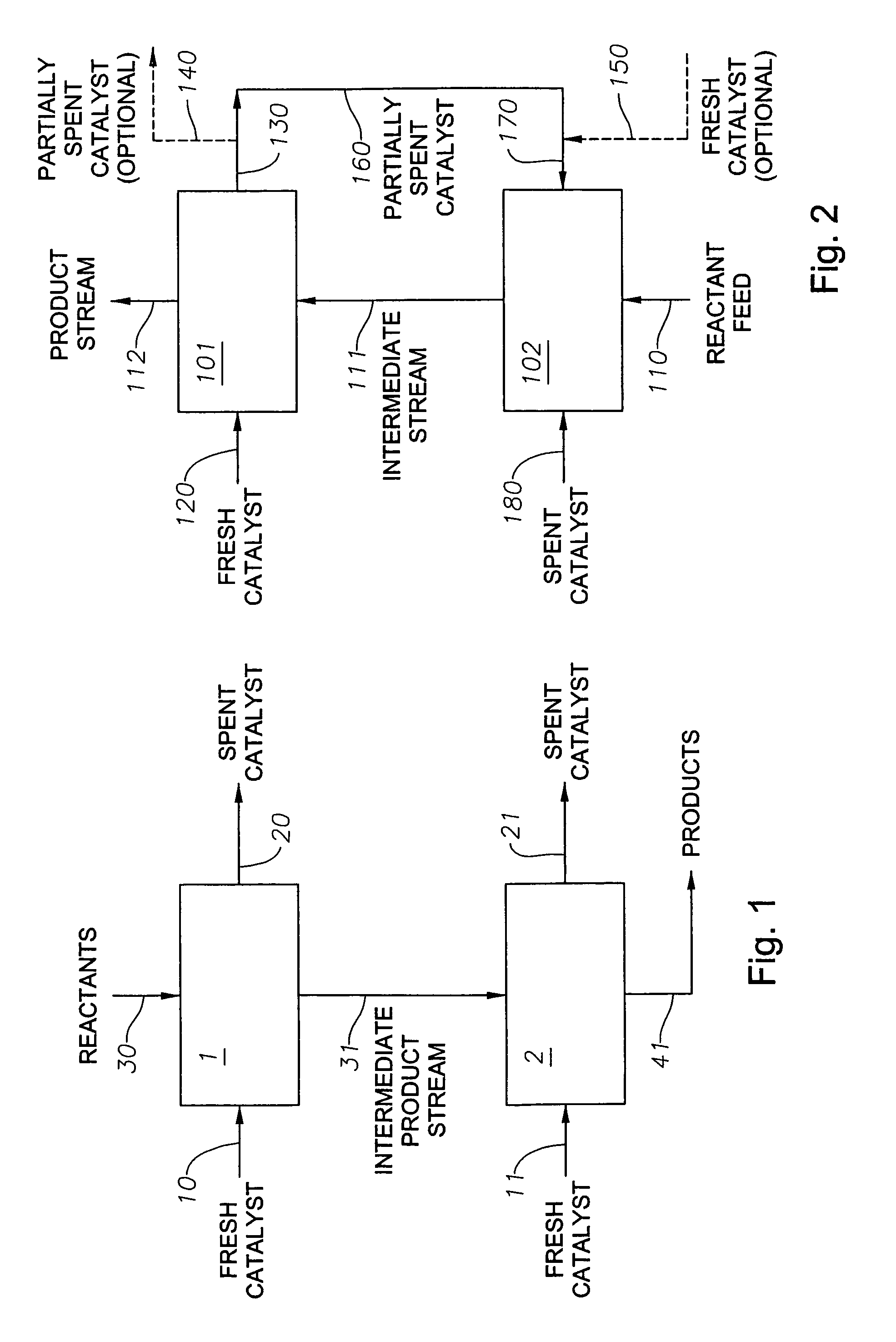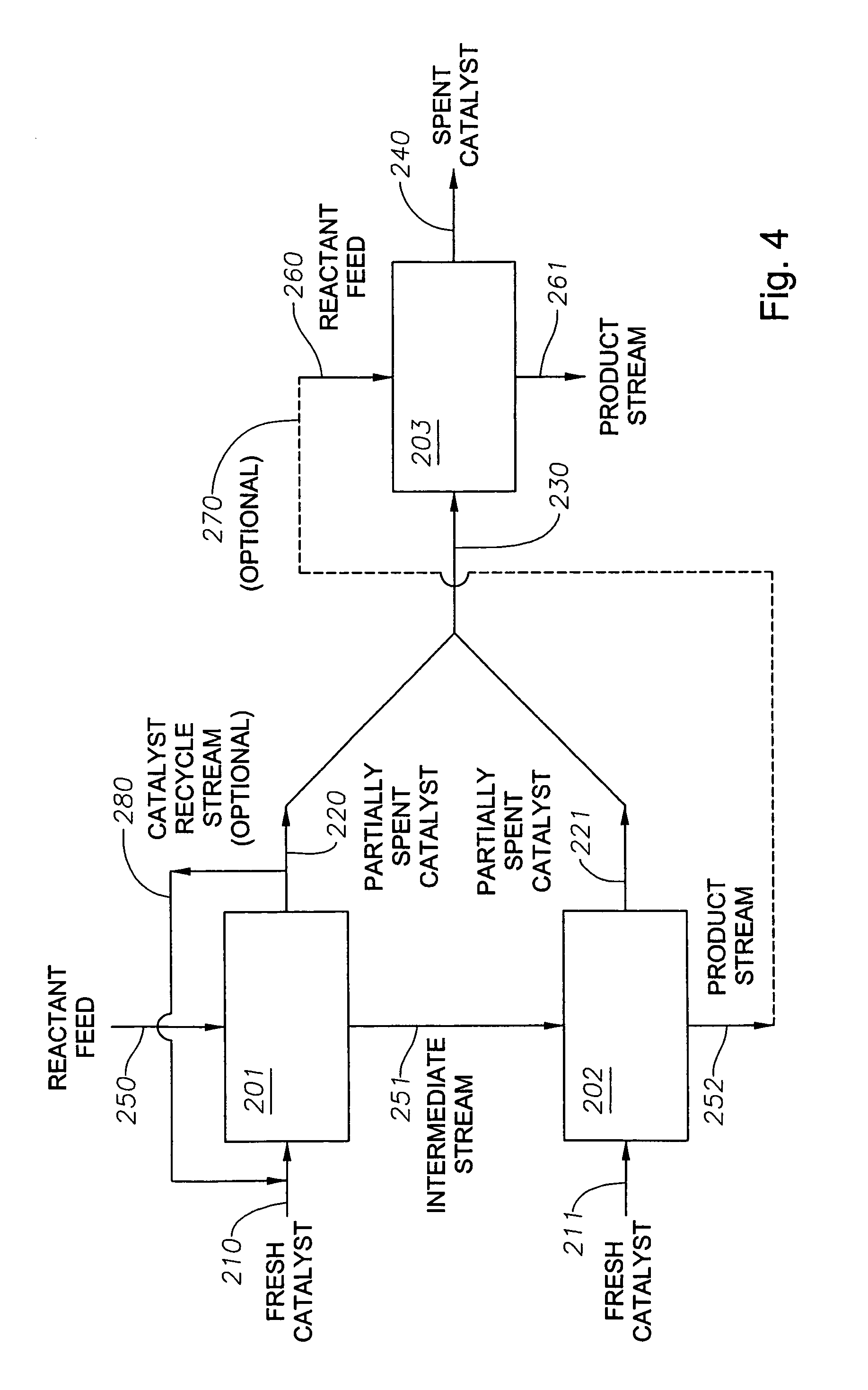Method of removing and replacing catalyst in a multi-reactor cascade configuration
a multi-reactor cascade and catalyst technology, applied in the field of multi-reactor cascade replacement methods, can solve the problems of catalyst inactivation, catalyst regeneration can take a considerable amount of time, and the entire reactor operation must be stopped during catalyst replenishment, so as to reduce the frequency of costly catalyst replacement, reduce the cost of catalyst, and increase the removal of older catalysts
- Summary
- Abstract
- Description
- Claims
- Application Information
AI Technical Summary
Benefits of technology
Problems solved by technology
Method used
Image
Examples
Embodiment Construction
[0024]To optimize both the productivity and the economics of a catalytic process carried out inside a series of catalytic reactors, a defined program of catalyst withdrawal and replacement has been devised. The program offers an improvement over conventional catalyst replacement methods, especially in a series of multiphase slurry bubble or fluidized bed catalytic reactors where the age distribution of the catalyst particles is substantially uniform. By way of illustration only, as in FIG. 1, a multi-reactor series comprising two or more reactors and catalyst recycling, replacement, or replenishment means is employed. The reactors are configured for serial reactant flow from one reactor to the next. The same kind of catalyst is employed in the reaction zone of each reactor. Each reaction vessel and catalyst replacement means can be similar to that described in U.S. Pat. No. 5,733,440, the disclosure of which is incorporated herein by reference. The catalyst may operate as a fixed, e...
PUM
| Property | Measurement | Unit |
|---|---|---|
| equilibrium age | aaaaa | aaaaa |
| catalytic activity | aaaaa | aaaaa |
| chemical compositions | aaaaa | aaaaa |
Abstract
Description
Claims
Application Information
 Login to View More
Login to View More - R&D
- Intellectual Property
- Life Sciences
- Materials
- Tech Scout
- Unparalleled Data Quality
- Higher Quality Content
- 60% Fewer Hallucinations
Browse by: Latest US Patents, China's latest patents, Technical Efficacy Thesaurus, Application Domain, Technology Topic, Popular Technical Reports.
© 2025 PatSnap. All rights reserved.Legal|Privacy policy|Modern Slavery Act Transparency Statement|Sitemap|About US| Contact US: help@patsnap.com



